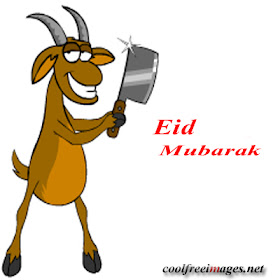Rukhsati takes place, when the groom and his family leave together with the bride. The Qur'an is normally held over the brides head as she walks from the stage to the exit in order to bless her. This is a somber occasion for the bride's parents as it marks the departure of their daughter from their home. The departure of the bride becomes a very emotional scene as she says farewell to the home of her parents and siblings to start a new married life.
Sunday, November 28, 2010
Saturday, November 27, 2010
Monday, November 22, 2010
Doodh Pilai
Doodh Pilai is a ceremony which is prevalent in many Pakistani weddings. On the actual wedding day, the sisters and cousins of the bride will bring milk for the groom. After he drinks the milk, he is supposed to present his new sisters- in -law with money and gifts.
Linking to Ruby Tuesday. Visit Mary Tomaselli's site for more photos with Red.
Sunday, November 21, 2010
Barat
The barat or grooms procession indicates the arrival of the groom's family and friends to the bride's house. The barat is often accompanied by the rhythms of a dhol (drum) as it arrives and is greeted with flowers and rose petals by the bride's family. The bride traditionally wears a red,pink or purple gharara, lehenga or shalwar kameez which is heavily emroidered.However, other bright colors may also be worn. The dress is always accompanied with heavy gold jewelery. The groom may wear a traditional dress such as sherwani with a sehra or turban .
A dinner is served which consists of one rice dish, one salan(viand) and one sweet dish as any more than this amount is banned in Pakistan nowadays.
Wednesday, November 17, 2010
Today is Eid-Ul-Adha!
Eid-ul-Adha or Eid-ul-Azha is celebrated at the end of Hajj, which is an annual pilgrimage to Mecca. The ‘Festival of Sacrifice’ is followed by a ‘Feast of Sacrifice’, which pays homage to Prophet Abraham’s unselfish act of sacrificing his son, Ishmael, to God. In turn, God spared the boy’s life and instead substituted a sheep. In remembrance, people sacrifice a lamb, goat, or other animal and give the meat to family, friends, relatives, and most especially to the poor.
Tuesday, November 9, 2010
Tael-Mehndi
Mehndi or the Rasm-e-henna ceremony, takes place one or two days prior to the main wedding day. The event is traditionally held separately for the bride and the groom.The henna is symbolically placed on the couple's hands. The groom's friends and family bring along sweets and henna for the bride, and the bride's family does the same for the groom. On the bride's ceremony, the groom normally does not participate and similarly, on the groom's event the bride stays at home.
Traditionally, since there were separate functions for the bride and the groom, the groom's function was called 'Tael' (oil) where female guests apply oil into the groom's hair.Ceremonies are now held simultaneously for both the groom and the bride, the use of the term 'tael' has diminished greatly. In some cases, the entire ceremony is instead referred to as "Tael Mehndi" (Oil and Henna) ceremony.The bride normally wears a green dress or yellow for the Henna celebration and uses only light, or mostly without make-up. The groom typically wear a casual Shalwar Qameez. The bride and/or the groom are brought forward in the ceremony under a decorative dupatta by their close relatives. In the bridal ceremony, a certain number of married women who are closely related to the bride apply henna to her hands, and feed her sweets. This ritual is supposed to bring good luck and longevity to the bride's married life. Similarly, on the groom's side, oil is applied to his head and sweets are fed to the groom.
 |
| Tray containing "tael"(oil), "mehndi"(henna) & "methai"(sweets) |
 |
| The groom accompanied by his father, Pakistani TV actor Jamil Fakhari. |
 |
| The bride brought forward by close relatives. |
 |
| The groom and bride |
 |
| Me, preparing to apply "mehndi" during the ceremony |
My entry for this week's Ruby Tuesday.
Friday, November 5, 2010
Wedding in the Family
For the next 4 days, a wedding will be celebrated in our family.It is a tradition here that the bride's family string hundreds of colored lights over and around their home, creating an ostentatious announcement of their daughter's forthcoming marriage.I'm sharing a photo of how our house looks like everynight for next 4 days .












